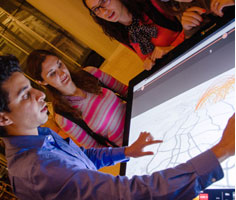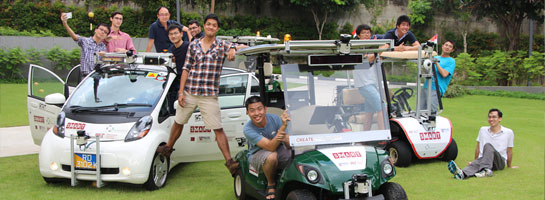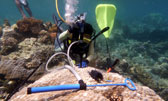




 (L-R) Dr Intan Suci Nurhati and Dr Jani Tanzil
(L-R) Dr Intan Suci Nurhati and Dr Jani Tanzil
Not many people are aware that there are big live corals around Singapore. And not many are aware that corals grow by forming layers, much like trees that form growth ring each year. Because these coral layers “lock-in” certain chemicals under different environmental conditions, they can serve as great archives of past environmental changes. Studying these coral bands can provide us with important information on environmental changes, including regional climate change and heavy metal (such as lead) pollution. By analysing these corals, researchers from the Singapore MIT-Alliance for Research and Technology (SMART) can look back over multiple decades, even hundreds of years, to track environmental changes through time.
Two lady researchers, from SMART’s Center for Environment Sensing and Modeling (CENSAM), literally dive deep into the waters around Singapore in search of big corals, retrieve coral cores (corals are not damaged in the process of getting the cores) and date them by putting them through x-rays and fluorescent light to uncover the clearest picture of the growth banding of the coral. Further, they analyse the geochemistry of the corals back in the SMART labs. Their research activities also include regularly taking seawater and air samples in the field to conduct environmental quality measurements.
See News Release for more.